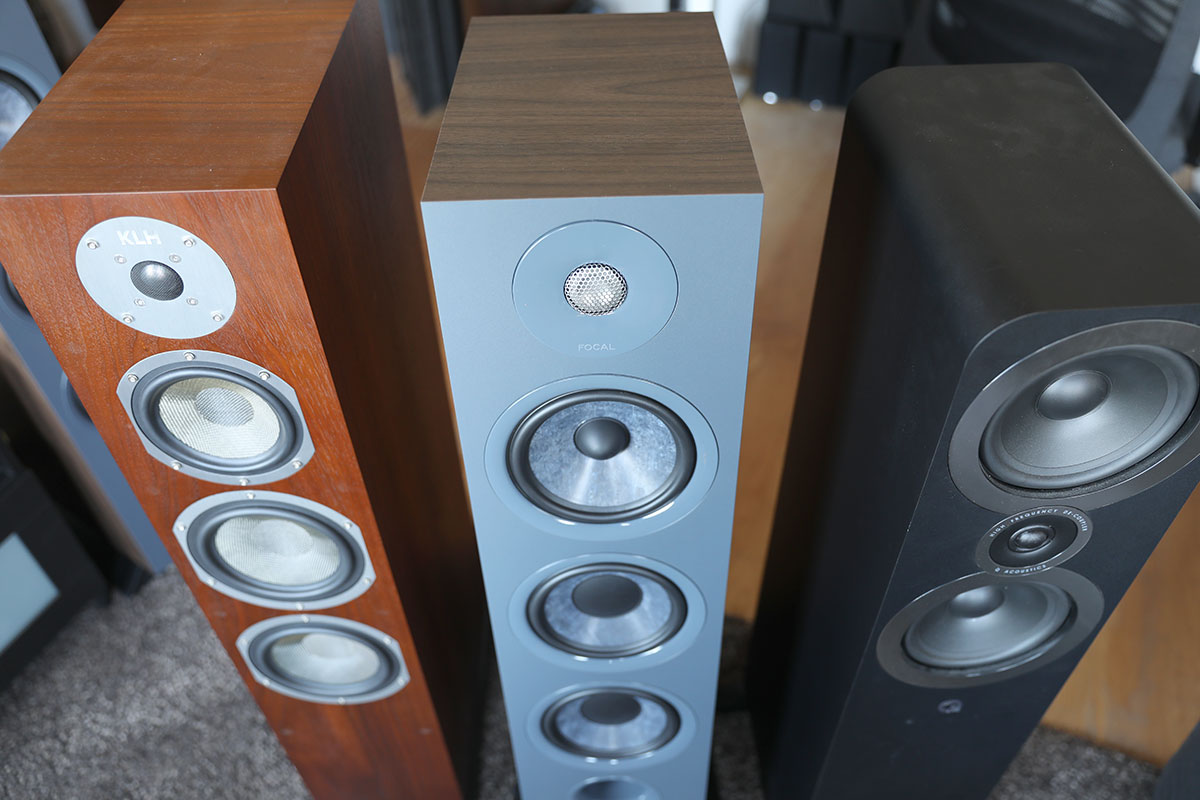
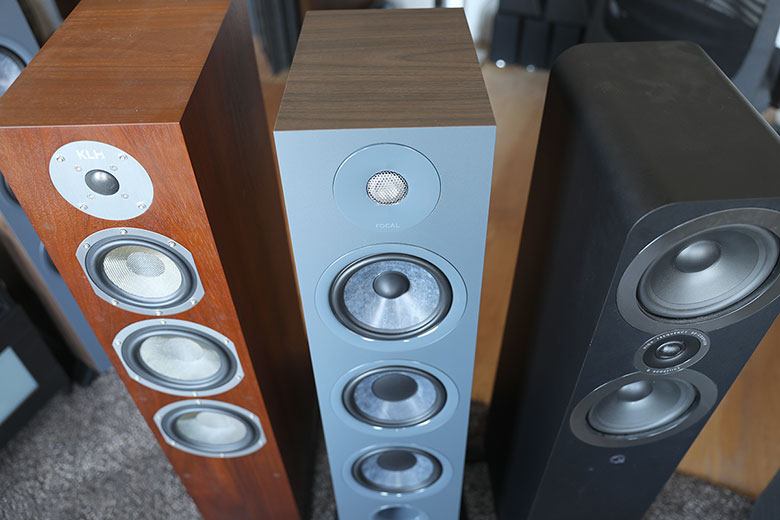
The Master Switch


The Master Switch
A quality floorstanding speaker can instantly supercharge your sound system. Not only do they look good, drawing focus to a sound system and making it stand out rather than blend in, but they're known for sounding spectacular. They're designed to slot in next to bookcases and TV cabinets, taking advantage of vertical space and resulting in a smaller footprint. Most of them, especially the pricier ones, will quite happily fill even a large room and create theater-quality sound. For more background, see our floorstanding speakers comparison table and buying advice below the picks.
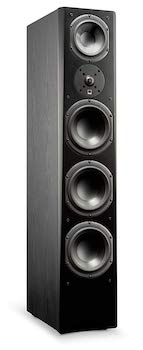 Recommended Amp Power: 20-300W/8Ω
Recommended Amp Power: 20-300W/8Ω
Sensitivity: 88dB
Drivers: 3 x 6.5” Woofer, 1 x 5.25” Mid-range, 1” Tweeter
What We Like: Genuinely brilliant sound, terrific design.
What We Don’t: You’ll need a good amp to get the best out of them.
The SVS Prime Pinnacle are appropriately named, because in our opinion they really are the best floorstanding speakers you can buy right now. In terms of sound, value, and design, they just crush it. The audio quality manages to be both breathtakingly powerful and surprisingly articulate, handling heavy dance and hip-hop as easily as delicate folk music. SVS held the previous top spot on this list, with the brilliant but awkwardly shaped Ultra Towers. We think the Prime Pinnacle fix everything that we didn’t like about those speakers and with some added secret sauce (and a friendlier and more accommodating shape, making it easy to place them). Other speakers, like the amazing Focal Chora 826s, may have even better sound, but they can’t boast the all-around quality of the Prime Pinnacles.
We must warn you that the SVS Prime Pinnacles are unforgiving. Powering these with a cheap amplifier will reduce the sound quality, and they need quality components to get the best out of them. At the current price, this may not be an issue for most people – chances are if you can afford them, you’ve got a good amp anyway – but they are significantly less forgiving than a speaker like the Q Acoustics 3050i, below. All the same, we believe these are the best floorstanding speakers you can buy at the moment...Read our in-depth review
See the SVS Prime Pinnacle
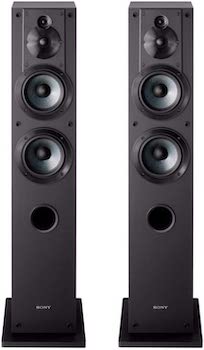 Recommended Amp Power: 20-145W/8Ω
Recommended Amp Power: 20-145W/8Ω
Sensitivity: 88dB
Drivers: 2 x 5” Woofer, 1” Tweeter
What We Like: Clean and clear sound at a hugely attractive price.
What We Don’t: The treble can be a little harsh when watching movies.
We recently re-evaluated our budget floorstanding speaker options. While there were plenty of models available, we thought we could do better, and find a model for you that would just knock it out of the park. And we did. The Sony SS-CS3s are everything we want from an affordable pair of speakers, delivering clean and clear sound quality that feels natural and realistic. Unlike many inexpensive speakers, the SS-CS3s have a solid build, and looks that are as clean as the sound. They are quite old now, but have aged spectacularly well. Other affordable models like the Onkyo SKF-4800 perform well, but why would you buy them when you could have a pair of speakers that are as assured and confident as these?
In our opinion, however, there are some rough edges to the SS-CS3s. While in general, the sound quality performs well, we did notice that movie audio could be a little harsh and grating at times, with the trouble becoming hard to listen to. This is a common problem with affordable speakers, but somehow, we found even more frustrating here, given how well the speakers perform with things like music. If you want an affordable pair of speakers that excel at movie audio, check out the Klipsch R-26FA, below. Otherwise, we think the SS-CS3s remain one of the best floorstanding speaker options at this price point.
See the Sony SS-CS3
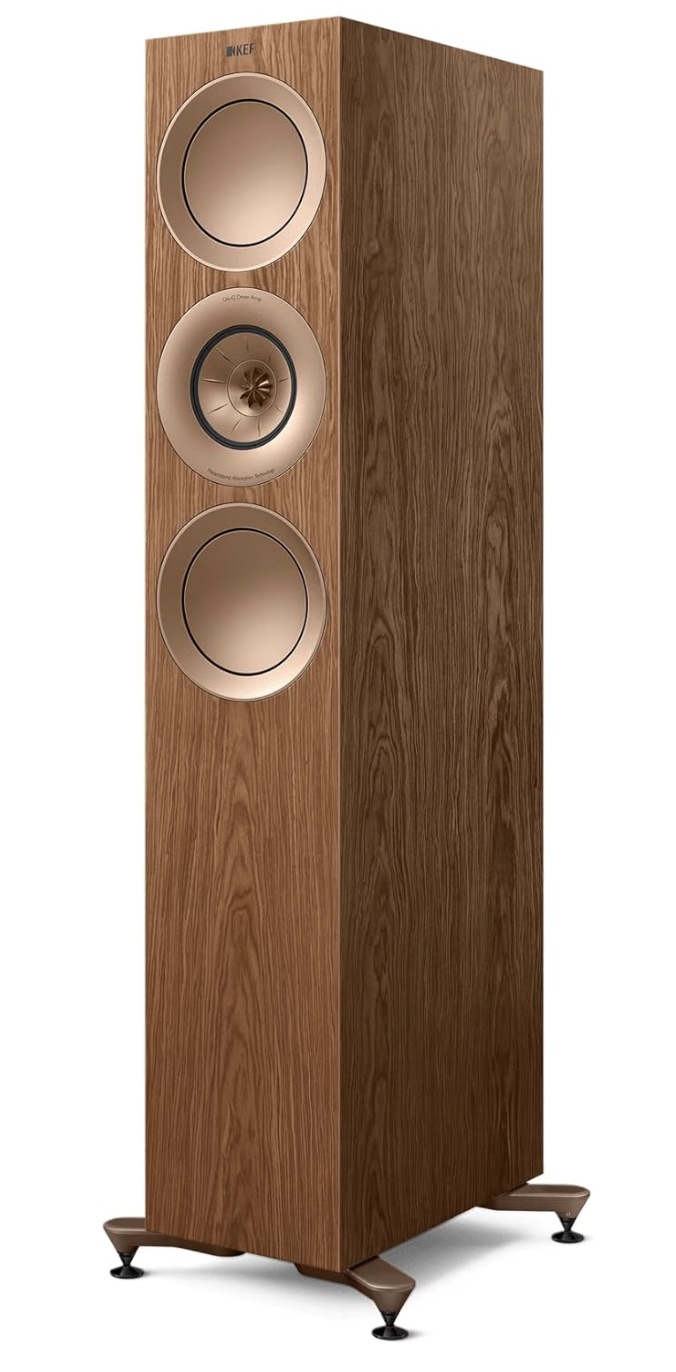 Recommended Amp Power: 15-250W/8Ω
Recommended Amp Power: 15-250W/8Ω
Sensitivity: 88dB
Drivers: 2 x 6.5" Woofer, 5" Mid-range, 1" Tweeter
What We Like: A truly magnificent update to a classic line.
What We Don't: Needs excellent equipment to really get the best out of it.
We agonized over this one. KEF make such excellent audio gear, and have been doing it for so long, that it was hard to pick which of their excellent floorstanders to include. In the end, we had a choice: either make this entire list a rundown of the best KEF speakers around, or pick the one we thought would suit most people. For us, that's the new R7 Meta - a great option in a line that includes the R11 and the R5. This is right between those, and it's superb.
Believe it or not, you get an awful lot of bang for your buck with the KEF R7 Meta. The sound is effortlessly clear and clean, with superlative dynamics. The design is clever, too, with neat plinth feet that help isolate your sonics. That said, you shouldn't go for these unless you've got a really solid amp and DAC combo - maybe even a dedicated pre and power amp. While they're very good, they work best when the other bits of the signal chain are of similar quality. Still, these are excellent - and as we mentioned, KEF make plenty of other delectable speakers, including that smaller and slightly less expensive R5 Meta.
See the KEF R7 Meta
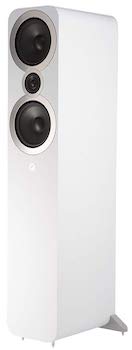 Recommended Amp Power: 25-100W/6Ω
Recommended Amp Power: 25-100W/6Ω
Sensitivity: 91dB
Drivers: 2 x 6.5" Woofer, 1" Tweeter
What We Like: Superb in a surround sound setup.
What We Don't: Weak bass, not great for music.
Small rooms challenge big floorstanding speaker, and one that intends to rise to that challenge needs a technological advantage. The 3050i from Q Acoustics has the company's Helmholtz Pressure Equalizer - a dampening tube inside the cabinet, designed to tackle resonance. The cabinet itself is specially braced, to help with clarity. While we certainly don’t think these are the best speakers available, and they definitely have some deficiencies exposed in rooms over about 150 square feet, they perform exceptionally well in this particular context. They are far better at this than speakers from the likes of Jamo, below. They feel forgiving and natural, with an easygoing sound that is a joy to hear.
The deficiencies of the Q Acoustics 3050i speakers are most noticeable in the bass, which is weak and unimpressive when listening to music—although when paired with a subwoofer and surround speakers for home theater, the 3050i speakers crush it. It also helps that the design is both eye-catching and clever, placing all the drivers in the top half of the speaker. This results in a very wide sweet spot, making the 3050i speakers, again, very forgiving. When showcased in a small room, they are easily among the best options available... Read our in-depth review
See the Q Acoustics 3050i
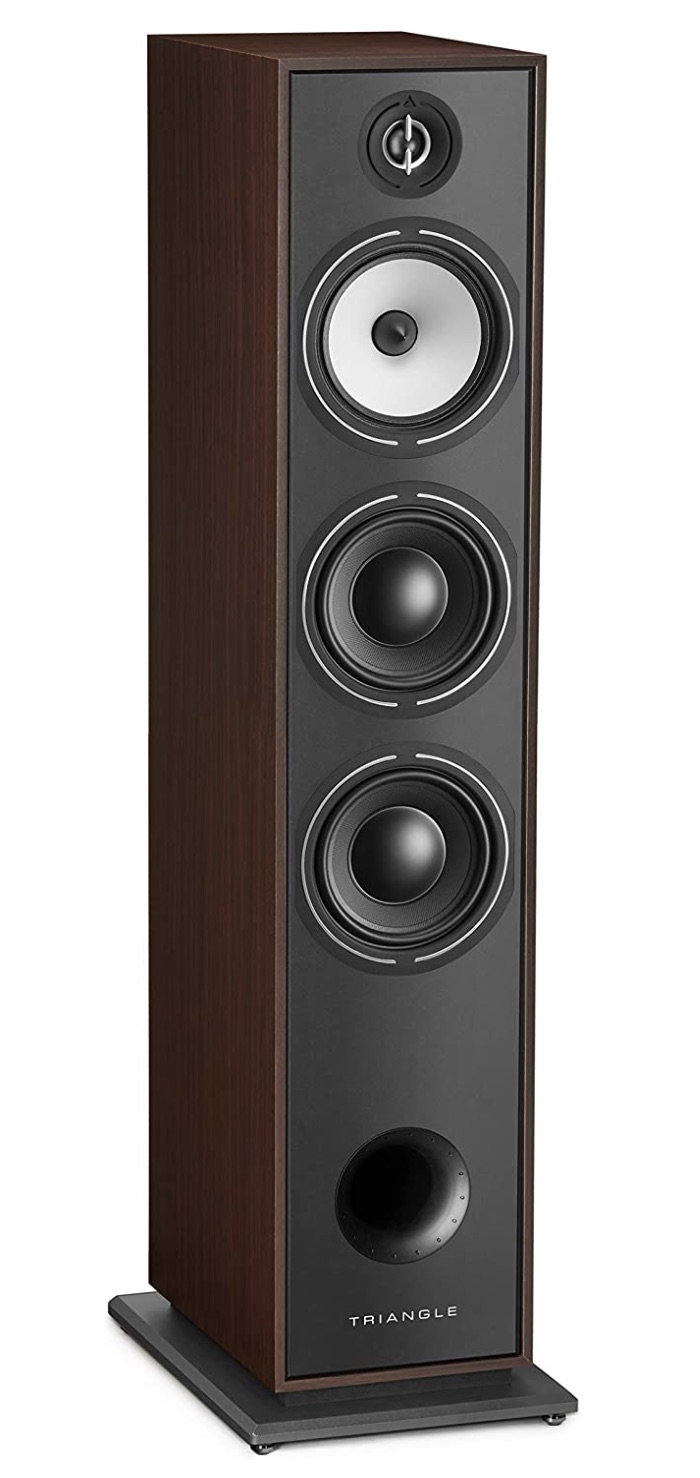 Recommended Amp Power: 25-150W/6Ω
Recommended Amp Power: 25-150W/6Ω
Sensitivity: 92dB
Drivers: 2 x 6.3" Midrange, 1 x 6.3”, Woofer, 1" Tweeter
What We Like: Hugely energetic, with great rhythm and drive.
What We Don't: Best in bigger rooms.
The stupendous Triangle Borea BR08 speakers unseat the ELAC Uni-Fi as our top choice for vinyl lovers. We don’t think you’ll find a pair of floorstanding speakers available right now that deliver this much excitement, punch and energy when asked to translate a vinyl record. There’s huge verve and style here, with an exciting sound that brings out the warmth from a turntable setup. The cabinets look basic, but they’re solidly built, and we love the included plinths for mounting. They also have the ability to get plenty loud—not as loud as the SVS Prime Pinnacle, our top pick, but still enough to shake the walls.
With its expansive sound quality, the Triangle Borea BR08 does have some limitations. Chief among these is that it can sound a little congested in rooms under 250 square feet—that energy just ends up with nowhere to go. For those with smaller rooms, the pricier ELAC Uni-Fi 2.0 speakers may be a better option. If those are too dear, then try the Sony SS-CS3, which we’ve found does a good job with vinyl too. But honestly? The Borea BR08s occupy the sweet spot for us, providing delightful sound at what we think is a reasonable price.
Triangle Borea BR08
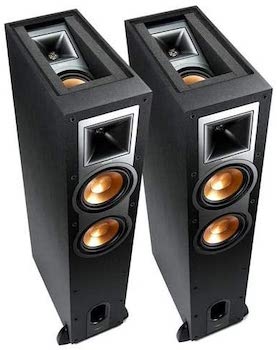 Recommended Amp Power: 100-400W/8Ω
Recommended Amp Power: 100-400W/8Ω
Sensitivity: 97dB
Drivers: 2 x 6.5” Woofer, 1 x 1” Tweeter
What We Like: Huge power and volume, with built-in Dolby Atmos.
What We Don’t: Large footprint means you’ll need a decent amount of space.
If you have a super-powerful amp, or you like to drive your speakers as hard as they can go, then you need the Klipsch R-26FAs. They can take up to 400 watts per channel at 8 ohms, and have a staggeringly high sensitivity of 97dB, highest of any model on this list. The result is titanic volume, and huge energy to the sound. They are one of the few speakers to integrate an up-firing Dolby Atmos module, making them ideal for home theater setups. They were expensive at launch, but have dropped to a very affordable price at the time of writing, meaning they are very much worth your while.
One thing to bear in mind is that the Klipsch R-26FA are enormous. With a depth of 16 inches, their footprint means they need a large amount of space to sit in, and they do best when position far away from the wall. This means they are unsuited to rooms that are less than about 150 square feet, so proceed with caution if you have a small listening space. If you’re looking for something less expensive, that also manages to put out a decent volume without being planet-sized, try the Jamo Studio Series S 809 below.
See the Klipsch R-26FA
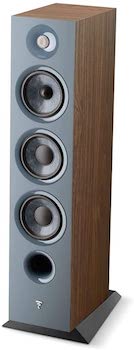 Recommended Amp Power: 40-250W/8Ω
Recommended Amp Power: 40-250W/8Ω
Sensitivity: 91dB
Drivers: 2 x 6.5” Woofer, 1 x 6.5” Midrange, 1 x 1” Tweeter
What We Like: Huge detail and transparency, especially in the treble.
What We Don’t: The Chora 826 are very fussy about positioning.
If you’re looking for a pair of floorstanding speakers that match brilliant sound with eye-catching design, it’s really hard to argue against the Focal Chora 826. We couldn’t believe the level of detail and transparency when we tested them— in our opinion, they smoked more expensive models from the likes of KEF and MarkAudio-SOTA. Focal have built the Chora 826s out of a new material called Slatefiber, a mix of carbon fibers and thermoplastic polymer which create a cabinet that is both light and incredibly stiff. The result is extraordinary, a high-end speaker that both looks and sounds great. Focal speakers usually have massive pricetags—often upwards of five figures— so it’s a pleasant surprise to see them releasing a relatively affordable pair.
One thing we did find was that the Chora 826 were very fussy about their positioning, with a tiny sweet spot that took some work to find. This was surprising, given that they come with specially angled stands that (we thought) should have made this a little easier. That could be a problem if you have an unforgiving listening room. Worth noting: there is a variant of the speaker, the Chora 826 Ds, which come with an integrated up-firing Dolby Atmos module. We haven’t had a chance to test this yet, but given how good the basic Choras are, we imagine they are pretty spectacular.
See the Focal Chora 826
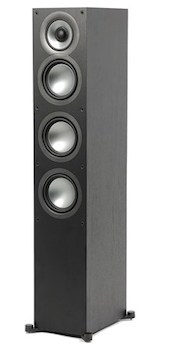 Recommended Amp Power: 40-140W/8Ω
Recommended Amp Power: 40-140W/8Ω
Sensitivity: 85dB
Drivers: 3 x 5.25" Woofer, 4" Mid-range, 1" Tweeter
What We Like: A giant leap forward for ELAC results in one of the most energetic speakers we’ve ever heard.
What We Don't: Won’t satisfy those who demand reference-grade sound.
The ELAC Uni-Fi 2.0 may no longer be our top pick for vinyl listeners, thanks to the stellar Triangle Borea BR08, but we still consider them a top-ten speaker. They are three-way, with a good range of extension down low, and they really managed to bring out the warmth and energy of a vinyl soundtrack. ELAC have continually managed to innovate over the years, and while these speakers were originally designed for use with AV receivers in home theater setups, we think they really thrive in two channel systems, especially if your source is a turntable.
That said, the ELAC Uni-Fi 2.0s relatively expensive, at over $1,000. We also don’t think they are for anyone who demands clear, neutral, balanced sound. They don’t have the realism of something like the SVS Prime Pinnacle, which may be a problem for those who don’t like additional color. If you’re looking for a more affordable pair of speakers from vinyl, we’d suggest trying the aforementioned Triangle Borea BR08, above, which also lend themselves to turntables well. Those cost a little over half the price of the ELACs, and we think they’re better overall.
See the ELAC Uni-Fi 2.0
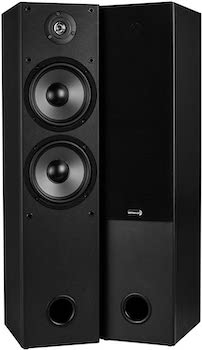 Recommended Amp Power: 90-150W/6Ω
Recommended Amp Power: 90-150W/6Ω
Sensitivity: 88dB
Drivers: 1 x 6.5”” Woofer, 1” Tweeter
What We Like: Good for those on a budget
What We Don’t: Distortion at high volumes, and there are annoying spring clips on the rear.
Generally speaking, we’d advise you to steer clear of floorstanding speakers under $200; at that price point, it’s very hard to get good results. Dayton Audio are among the few companies to do it successfully, and their T652 speakers managed to produce solid sound quality at a very affordable price point. These are perfect for smaller rooms, and if you want to spend a little more and boost the sound quality even further, you can spring for the T652-AIR versions, which include an Air Motion Transformer tweeter which gives you more detailed audio. That said, we think the base T652 is good enough to buy on its own.
As the Dayton Audio T652s are budget speakers, you can definitely expect some distortion at higher volumes. You also won’t be able to use banana plugs for your speaker connections here; these speakers use spring clips, which means you’ll need to rely on bare speaker wire. It’s frustrating, but not a deal breaker, and the T652s are still among the best budgets because we’ve tested.
See the Dayton Audio T652
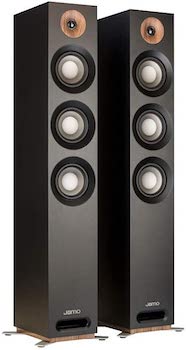 Recommended Amp Power: 20-240W/8Ω
Recommended Amp Power: 20-240W/8Ω
Sensitivity: 90dB
Drivers: 3 x 5”” Woofer, 1” Tweeter
What We Like: Great imaging and realism.
What We Don’t: Misleading Dolby Atmos claims.
We have a real soft spot for Jamo speakers. The Studio Series S 809 are, we think, among the best models they’ve ever produced— and easily some of the best under $500. While they don’t have the assured nature of the Sony SS-CS3 speakers, our top budget pick, they compensate with an engaging soundstage, as well as realism that challenges more expensive speakers. It also helps that they have wonderful design, with an eye-catching cabinet.
We have to knock a point off the Jamo Studio Series S 809 for what we feel are misleading claims. Jamo, In their marketing material, state that the S 809s are “Dolby Atmos tower speaker[s]” and that they provide “seamless Dolby Atmos integration”. When we see this thrown around regarding floorstanding speakers, we take it to mean that they contain up-firing modules, like the Klipsch R26-FAs (above). Nope—the S 809s simply have slots on top to include the Jamo S 8 ATM up-firing speakers, sold separately. Given that you can place any up-firing speaker on any set of floorstanding speakers, this doesn’t amount to much. These are good speakers, and at home in a home theater or hi-fi setup, but you need to be aware of what you’re getting.
See the Jamo Studio Series S 809
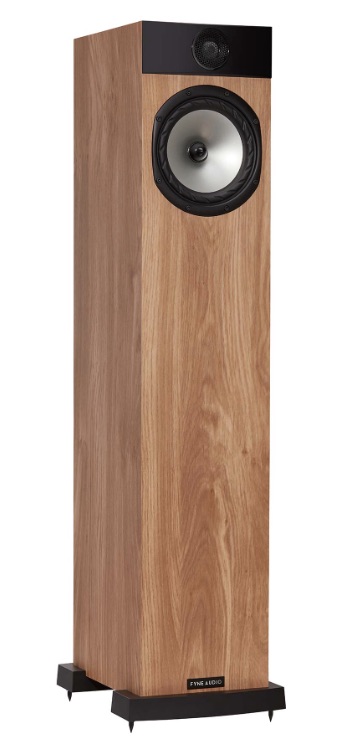 Recommended Amp Power: 40-180W/8Ω
Recommended Amp Power: 40-180W/8Ω
Sensitivity: 90dB
Drivers: 1 x 6” Woofer, 1 x 1” Tweeter
What We Like: Exceptional sound quality for the price.
What We Don’t: Very picky about components—get a bad match, and you’ll know it.
Given that Fyne Audio is made up of former engineers for Tannoy, you’d expect them to deliver good stuff. And they have. The F302i floorstanding speakers deliver tight, robust sound in all areas. We were especially impressed with the low end; at 36Hz extension, these don’t have the lowest bass on our list—the Aperion Novus Tower speakers, which are roughly the same price, go a little deeper. But we prefer the bass here. It’s got some guts.
The Fyne Audio F302i speakers are a top-ten pick, but they’re definitely not number one, and that’s because they take real effort. These demand a good amp and DAC or turntable, and if you don’t have them, the speakers will let you know it. To get the best out of these, you’ll want to make sure your amp has enough power to drive these. At 90dB, they aren’t hard to drive, but they are merciless at exposing poor components and recordings. We really like the F302i speakers, but they are definitely not for beginners. For a more friendly and less exacting listen, try the Q Acoustics 3050i speakers, or the Triangle Borea BR08s
See the Fyne Audio F302i
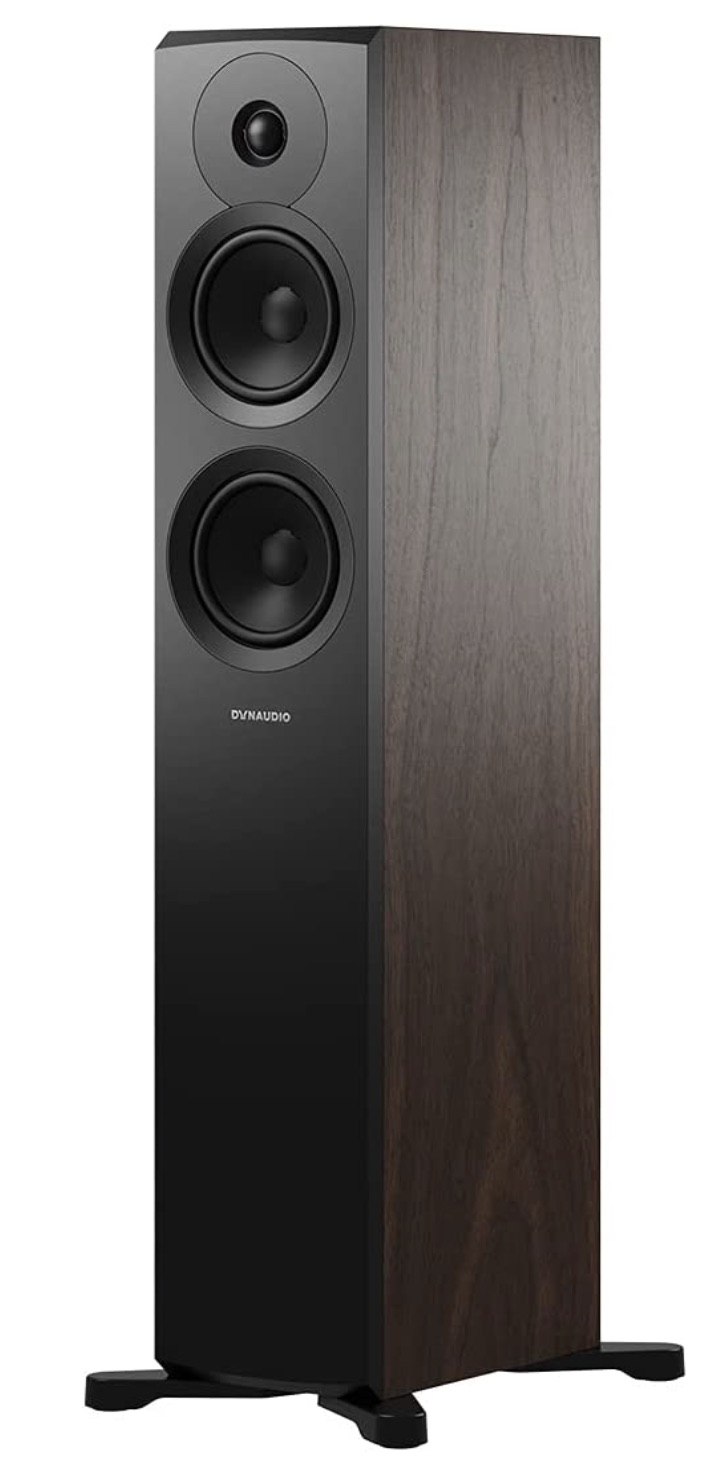 Recommended Amp Power: 20-180W/4Ω
Recommended Amp Power: 20-180W/4Ω
Sensitivity: 87dB
Drivers: 1 x 5.5” Woofer, 1 x 5.5” Midrange, 1 x 1” Tweeter
What We Like: Detail and resolution for days.
What We Don’t: Requires a cigar and smoking jacket to enjoy.
The Dynaudio Emit 30 are the apex of speaker refinement and elegance. Everything from the design and build quality to the detailed sound practically demands that you don a tuxedo or a smoking jacket, and crack open a bottle of your finest scotch. These are speakers that excel with audio content that has a wide dynamic range, like classical pieces, opera, and film soundtracks. We actually think it does a better job of this than the equally refined Bowers & Wilkins 603 S2, which is more expensive.
But there’s a very fine line between refined and stuffy, and sometimes, we just can’t help feeling that the Dynaudio Emit 30 crosses that line. Put any sort of music that requires a little verve and excitement through these, and you’ll be left mildly disappointed. They just don’t have the grit, grunt or guts to do their best work with this stuff, despite their clear ability with dynamic range. Speakers like the SVS Prime Pinnacle, while less elegant, do a much better job. We like the Emit 30 for certain situations, but they definitely have their drawbacks.
See the Dynaudio Emit 30
 Recommended Amp Power: 30-150W/6Ω
Recommended Amp Power: 30-150W/6Ω
Sensitivity: 88.5dB
Drivers: 2 x 5.25” Woofer, 1 x 1” Tweeter
What We Like: Forgiving and entertaining, with a big soundstage.
What We Don’t: Stiff competition means they aren’t the first choice.
We do have a soft spot for speakers that are relaxed in their positioning, and the Dali Oberon 5s definitely count. Unlike other speakers on this list, like the Focal Chora 826, you won’t have to spend time carefully adjusting their position. They have a wide and forgiving sweet spot, and even simply positioning them straight on will give a good result. It’s a result worth waiting for, too, with sound quality that is engaging and entertaining. Thanks to the big sweet spot, the soundstage is wide as hell, and we can safely say that the Oberon 5s are among the more realistic speakers on this list.
The problem is that this forgiving nature isn’t quite enough to elevate it above other choices. There is a significant amount of competition at this price point, and less expensive models like the Q Acoustics 3050i are arguably better options. On their own, the Oberon 5s are an excellent pair of speakers. But in comparison to other models, they remain an alternative, rather than a first choice.
See the Dali Oberon 5
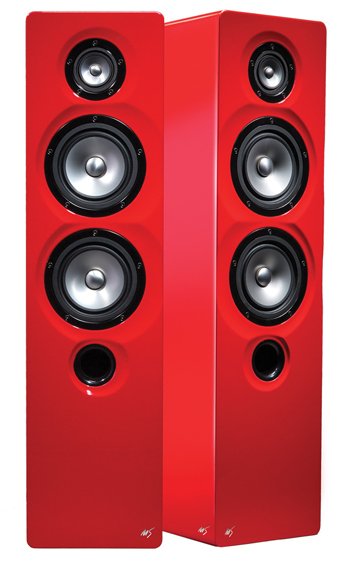 Recommended Amp Power: 50-100W/6Ω
Recommended Amp Power: 50-100W/6Ω
Sensitivity: 87dB
Drivers: 2 x 4.4” Woofer, 2” Tweeter
What We Like: Terrific design, splendid sound quality, relatively affordable price.
What We Don’t: We'd like a little more detail.
What a pleasant surprise. We'll admit: we had never heard of MarkAudio-SOTA before their press agency contacted us, asking us if we'd review a pair of their Cesti T floorstanding speakers. They are sitting in our testing room as we write this, and we keep finding our gaze drawn back to them. Perhaps it's the design, which has enough subtle touches and carefully placed elements to really stand out. Or the color: candy-apple red, if you please (the speakers are available in black or white, as well, if that doesn't appeal). Either way: we really, really like them.
They aren't the most expensive speakers on this list - that would be the $6,000 Polk Audio Legend L800s, below. But good high-end speakers have to juggle a number of balls, including relative value, and these crush it. While we do think the sound isn't quite as pinpoint precise as we'd like for $2,995—less expensive speakers like the Dynaudio Emit 30 do a much better job here—it's still solid, and we've spent many happy hours listening to these...Read our in-depth review
See the MarkAudio-SOTA Cesti T
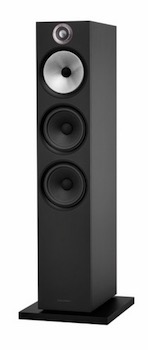 Recommended Amp Power: 30-200W/8Ω
Recommended Amp Power: 30-200W/8Ω
Sensitivity: 88.5dB
Drivers: 2 x 6.5" Woofer, 6" Mid-range, 1" Tweeter
What We Like: Gorgeous sound quality that represents a genuine upgrade.
What We Don't: Struggles against huge competition in this price range.
The anniversary edition of Bowers & Wilkins’ 603 speakers could have been a cash grab. They weren’t. Instead, B&W have completely reworked the internals, including a massive upgrade to the crossover. The result? Gorgeous sound, with an emphasis on balance, clarity, and realism. Classical or instrumental music through these is a joy. It’s rare to have a company put so much effort into what amounts to a rerelease, so we think it’s worth looking at.
The problem with the B&W 603 S2s is that as good as they are, they are up against some serious competition. Put them against the less-expensive SVS Prime Pinnacles, or the Focal Chora 826s, and they sort of fade into the background. Those speakers are just more interesting, with a more engaging sound quality. While you shouldn’t discount these speakers, by any means, you have to work very hard to justify purchasing them when there are so many other great options out there. But if you like the original 603s and want to upgrade, we definitely recommend taking a look at these.
See the Bowers & Wilkins 603 S2
 Recommended Amp Power: Up to 250W/8Ω
Recommended Amp Power: Up to 250W/8Ω
Sensitivity: 96dB
Drivers: 2 x 6.5” Woofer, 1 x 5.25” Mid-range, 1” Tweeter
What We Like: Stunning bass, gorgeous looks.
What We Don’t: Probably a little too traditional.
We admit that we haven’t experienced too many speakers from KLH before. We are very happy we got to rectify that, because the Kendall floorstanders have a lot to recommend about them. One of the things that surprised us the most was just how powerful the bass was. It quite happily went toe-to-toe with the SVS Prime Pinnacle – if not in raw power, then certainly in clarity and depth. If you’re a fan of bass-heavy music genres like EDM or hip-hop, you’re going to love the Kendalls. They look great, too, with a thick wooden body that still feels elegant.
However, while listening to the Kendalls, we couldn’t help but feel that they were a little too traditional. They were a solid set of floorstanding speakers, but they didn’t get the pulse racing in the same way that, for example, the ELAC Uni-Fi 2.0s did. The bass was killer, but there were no other real surprises here. Consider these a pair of very good, but not quite top-five, speakers. They would fit well in a moderately large listening room, and would work especially well for those who can’t stretch to a pair of Ultra Towers.
See the KLH Kendall
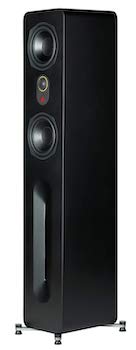 Recommended Amp Power: 20-150W/4Ω
Recommended Amp Power: 20-150W/4Ω
Sensitivity: 88dB
Drivers: 2 x 5.25” Mid-range, 1” Tweeter
What We Like: Friendly size, great sound.
What We Don’t: Bass leaves a little to be desired, design is hit or miss.
We honestly look forward to speakers from Aperion Audio, a company based in Oregon who are producing some genuinely good stuff. The Novus Tower is their latest, and if you’re looking for a great speaker that manages to produce solid sound with a very small body, look no further. The Novus Tower is tiny compared to speakers like the SVS Prime Pinnacle, and although they aren’t the most affordable, they offer excellent audio quality. The highs, in particular, are remarkable. Aperion redesigned the tweeters from their old Verus series, and the result is superb.
Unfortunately, the Novus Tower don’t get everything right. We just couldn’t get behind the industrial design - although we recognize this was a personal thing, and that your mileage may vary. We also aren’t fans of the bass, which feels underpowered and occasionally a touch flimsy. However, the Novus Tower are still excellent floorstanding speakers. They particularly excel as part of a home theater system.
See the Aperion Audio Novus Tower
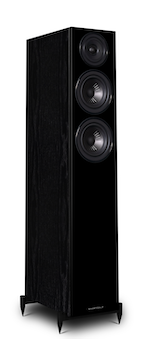 Recommended Amp Power: 30-150W/8Ω
Recommended Amp Power: 30-150W/8Ω
Sensitivity: 102dB
Drivers: 1 x 5”” Woofer, 1 x 5” Midrange, 1” Tweeter
What We Like: Wonderful midrange, and vocals are a treat.
What We Don’t: Conservative sound, fussy with positioning.
Wharfedale’s Diamond 12.3s do one thing really well: the midrange. Elements like vocals and guitars really shine with these speakers, feeling as if they’ve been coated in melted butter. They are a genuine pleasure to listen to, and although we think there are better speakers overall at this price point, like the Q Acoustics 3050i, these remain a viable alternative for anyone looking to spend no more than $1000 on a pair of speakers.
The problem comes when you move out of the midrange. For all the charms, the Wharfedale Diamond 12.3s field to Conservative, with bass that lacks confidence, and highs that are detailed but somehow a little sterile. Worse, they are sizeable speakers that demand a lot of room around them to get at that great midrange sound, and to cap it all off, the sweet spot is very narrow. This slightly fussy nature sours us a bit on the Diamond 12.3s. We still find ourselves going back for that glorious vocal sound, but there are definitely better options.
See the Wharfedale Diamond 12.3
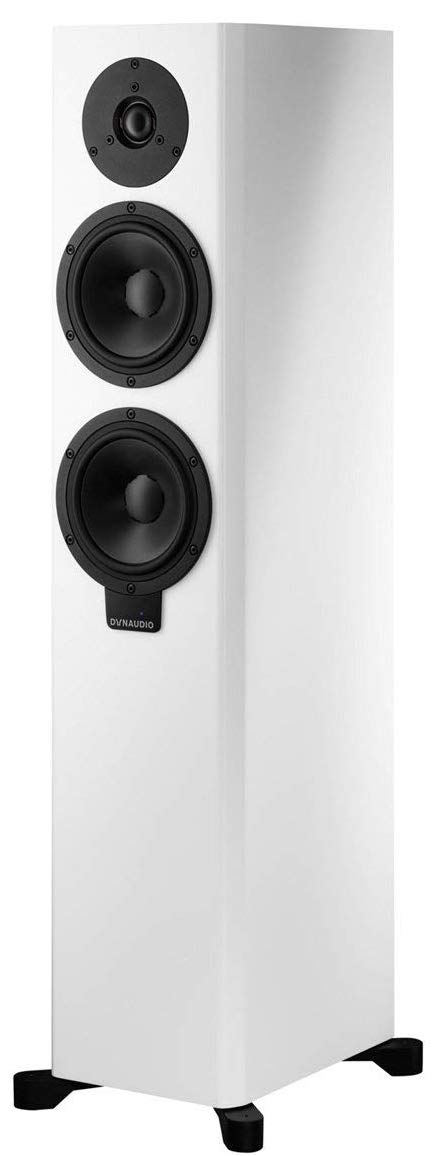 Recommended Amp Power: N/A
Recommended Amp Power: N/A
Sensitivity: Unknown
Drivers: 2 x 5.5" Woofer, 1" Tweeter
What We Like: A high-end wireless speaker? We love it.
What We Don't: Doesn't quite match the other high-end models on this list.
Dynaudio are one of those companies that could easily occupy this entire list, so good are their products. But we can't really justify putting something like the $85,000 Platinum Evidence here, and the Xeo 30 is the one speaker from the company that truly impressed us. They are wireless speakers, which are almost unheard of at this price range - you won't need an amp to drive them. While you will need an additional control box, and the sound quality isn't quite up there with Polk and MarkAudio-SOTA, they're still a beast of a set of speakers. That being said: they are an upgrade to the old Xeo 6, with an upgraded DSP and new tuning, so it's not like the sound quality is poor.
The setup and functionality makes us think of far more expensive speakers, like the Kii Audio Three - not on this list, as it costs around $10,000. Getting that functionality into speakers the cost under $4,000 is quite a trick, and these definitely deserve a place on this list.
See the Dynaudio Xeo 30
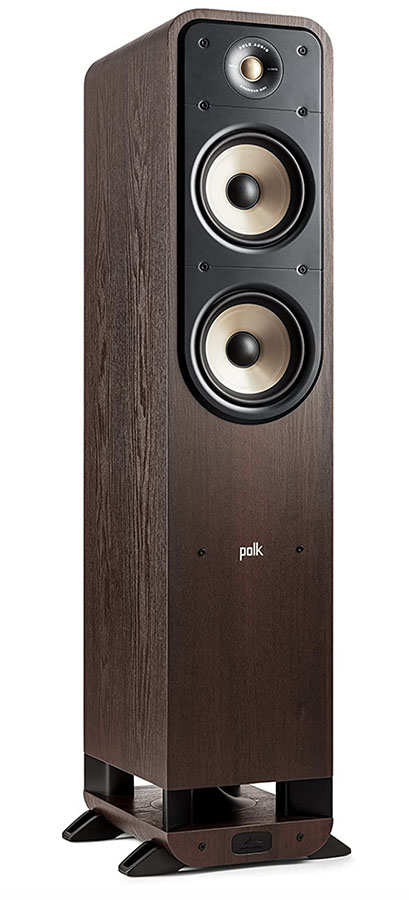 Recommended Amp Power: 20-200W/8Ω
Recommended Amp Power: 20-200W/8Ω
Sensitivity: 89dB
Drivers: 2 x 6.25” Woofers, 1” Tweeter
What We Like: Easygoing speakers with a welcoming price.
What We Don’t: A little quiet for our tastes.
If you have a small room and want a pair of floorstanding speakers that will operate with minimal fuss, and are a breeze to set up, then we recommend the Polk Signature S55. Despite their ported design, they’re remarkably unfussy regarding their positioning, and will give you a wide sweet spot to play with. The sound is effective, if unremarkable, with smooth mids and surprisingly crisp highs. We like the price, too - $498 maybe a little more expensive than the Onkyo SKF-4800, but the S50s are worth it.
That’s not to say they don’t have their downsides. While 90dB sensitivity isn’t the lowest on this list, we couldn’t escape the fact that the S50s felt too quiet at times. They didn’t have the power and authority of other speakers, like the excellent ELAC Uni-Fi 2.0s. They should be just fine for small rooms, but if you have a large space to fill, it’s worth exploring other options.
See the Polk Audio Signature Elite ES55
| Speaker | Price | RAP* | Sens** | Drivers | LF*** | HF**** |
|---|---|---|---|---|---|---|
| SVS Prime Pinnacle | $900 | 20-300W/8Ω | 88dB | 3 x 6.5", 1 x 5.25", 1 x 1" | 29Hz | 25kHz |
| Sony SS-CS3 | $148 | 20-145W/8Ω | 88dB | 2 x 5", 1 x 1" | 45Hz | 50kHz |
| KEF R7 Meta | $2,500 | 15-250W/8Ω | 88dB | 2 x 6.5", 1 x 5", 1 x 1" | 48Hz | 28kHz |
| Q Acoustics 3050i | $1,099 | 25-100W/6Ω | 91dB | 2 x 6.5", 1 x 1" | 44Hz | 30kHz |
| Triangle Borea BR08 | $549 | 25-150W/8Ω | 92db | 3 x 6.3”, 1 x 1” | 40Hz | 22kHz |
| Klipsch R-26FA | $449 | 100-400W/8Ω | 97dB | 2 x 6.5", 1 x 1" | 38Hz | 24kHz |
| Focal Chora 826 | $1,398 | 40-250W/8Ω | 91dB | 3 x 6.5", 1 x 1 | 48Hz | 28kHz |
| ELAC Uni-Fi 2.0 | $504 | 40-140W/8Ω | 85dB | 3 x 5.25", 1 x 4", 1 x 1" | 42Hz | 35kHz |
| Dayton Audio T652 | $150 | 90-150W/6Ω | 88dB | 1 x 6.5", 1 x 1" | 45Hz | 20kHz |
| Jamo Studio Series S 809 | $439 | 20-240W/8Ω | 90dB | 3 x 5", 1 x 1" | 45Hz | 20kHz |
| Fyne Audio F302i | $1,300 | 40-180W/8Ω | 90dB | 1 x 6”, 1 x 1” | 36Hz | 34kHz |
| Dynaudio Emit 30 | $1,700 | 20-180W/4Ω | 87dB | 2 x 5.5", 1 x 1" | 44Hz | 25kHz |
| Dali Oberon 5 | $1,300 | 30-150W/6Ω | 88.5dB | 2 x 5.25", 1 x 1" | 39Hz | 26kHz |
| MarkAudio-SOTA Cesti T | $2,995 | 50-100W/6Ω | 87dB | 2 x 4.4", 1 x 2" | 40Hz | 25kHz |
| Bowers & Wilkins 603 S2 | $2,299 | 30-200W/8Ω | 88.5dB | 2 x 6.5", 1 x 6", 1 x 1" | 48Hz | 28kHz |
| KLH Kendall | $750 | Up to 250W/8Ω | 96dB | 2 x 6.5", 1 x 5.25", 1 x 1" | 33Hz | 23kHz |
| Aperion Novus Tower | $699 | 20-150W/4Ω | 88dB | 2 x 5.25", 1 x 1" | 26Hz | 30kHz |
| Wharfedale Diamond 12.3 | $998 | 30-150W/8Ω | 102dB | 2 x 5", 1 x 1" | 45Hz | 20kHz |
| Dynaudio Xeo 30 | $3,599 | N/A | Unknown | 2 x 5.5", 1 x 1" | 26Hz | 21kHz |
| Polk Audio Signature Elite ES55 | $369 | 20-200W/8Ω | 89dB | 2 x 6.5", 1 x 1" | 34Hz | 40kHz |
*RAP = Recommended Amp Power
**Sens = Sensitivity
***LF = Lowest Frequency
****HF = Highest Frequency
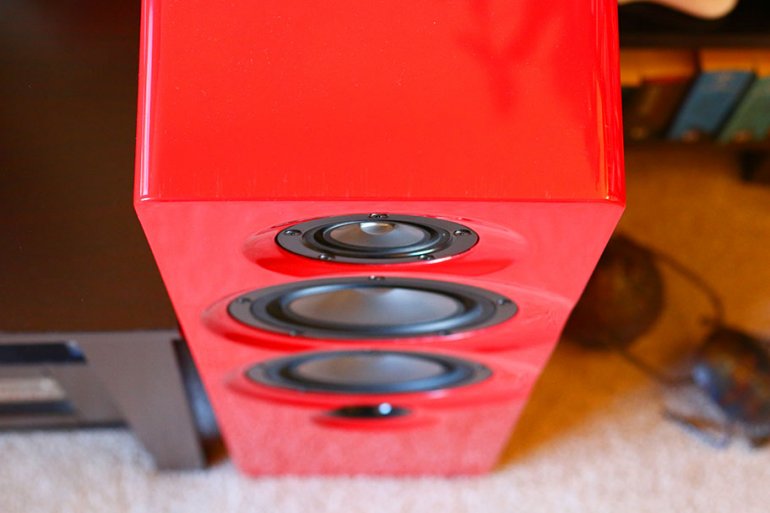
The differences between these two product types should be immediately obvious. Speakers are tall and thin. Bookshelf speakers are short and fat. Capiche? OK– we’ve simplified it a little. But there are definitely situations in which you could use both floorstanding and bookshelf speakers. The most obvious of these is in home hi-fi use, with a stereo amp, for playing music. Floorstanding speakers are fantastic for this, in that they deliver a much more powerful and wider sound than bookshelf speakers do. While we do love bookshelf models, they often don’t have the raw power that bigger floorstanders can put out.
That being said: this isn’t always the case – we’ve come across some bookshelf speakers that can leave their bigger brothers in the dust – in the smaller speakers do have some advantages, such as their size and weight. You’d have to be pretty daring to put a pair of tower speakers on a bookshelf! As always, we recommend evaluating the amount of space you have, as well as what you’re likely to be using the speakers for, before you choose between bookshelf and floorstanding speakers. If you’re more interested in home theater use, then we’d argue that you should go for floorstanding, and we explore this in a little more detail in a section below. If you do decide to go for bookshelf speakers, we have a list of the best available right here.
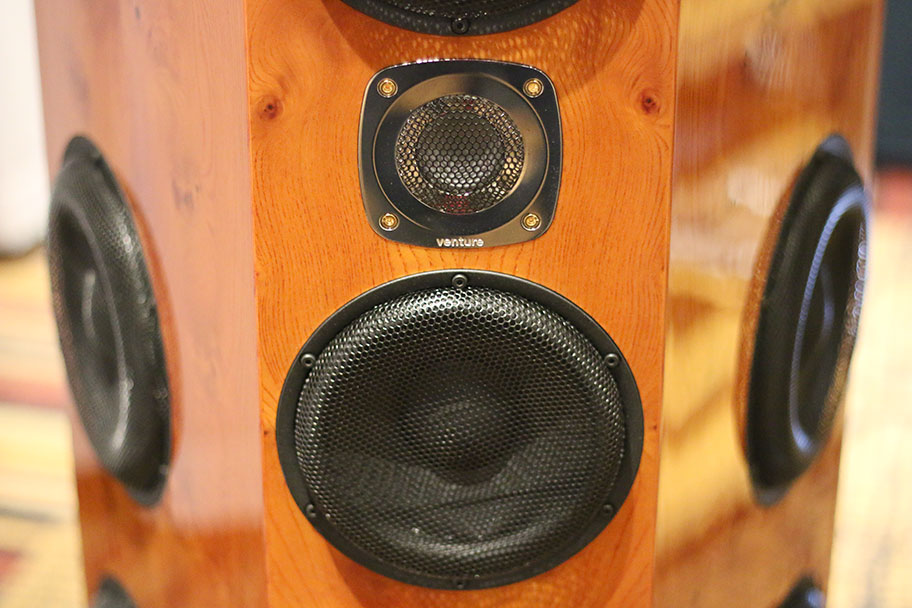
The placement of your floorstanding speaker is less important than something like, for example, a subwoofer. Generally, you should avoid putting them in corners, which could decrease the detail of the bass you get. The most common place to put them is the sides of your TV or stereo system with some room behind, although it depends on the size of your room and the furniture placement. Most importantly, be prepared to experiment, moves things around, and sit in different locations around the room to make sure you’re getting optimal sound. Also, be aware that the stuff in your room can have a massive effect on how things sound. Got a lot of bookshelves, soft couches, a few cushions? You'll probably be OK. Bare walls, glass coffee tables and lots of right angles? You may need to be a little more careful.
A rookie error is to stick them right against the wall in the corners of the room - makes sense, you'd think, right? Nope. Putting them against the wall destroys the bass energy, turning a mighty oomph into a tiny, muddy squeak. They need to be at least six inches from all walls, and preferably further than that. Obviously this is something that you may have to compromise on, depending on the sound and shape of your room, but as we said, make sure you play around with positioning. You also need to be aware of the position of the various speaker drivers. The last thing you want as to actually block any of them, or to put something in their path that could interfere with the sound. You’ll need to be quite careful not to obstruct things like these, which can be a little bit difficult if you have limited space. The good news is, floorstanding speakers are rarely nailed down. Although they may be heavy, you shouldn’t find moving them all that difficult. In addition, many of them come with screw-on feet that isolate the cabinet from the floor, eliminating vibrations and helping smooth out the sound, which is always welcome.
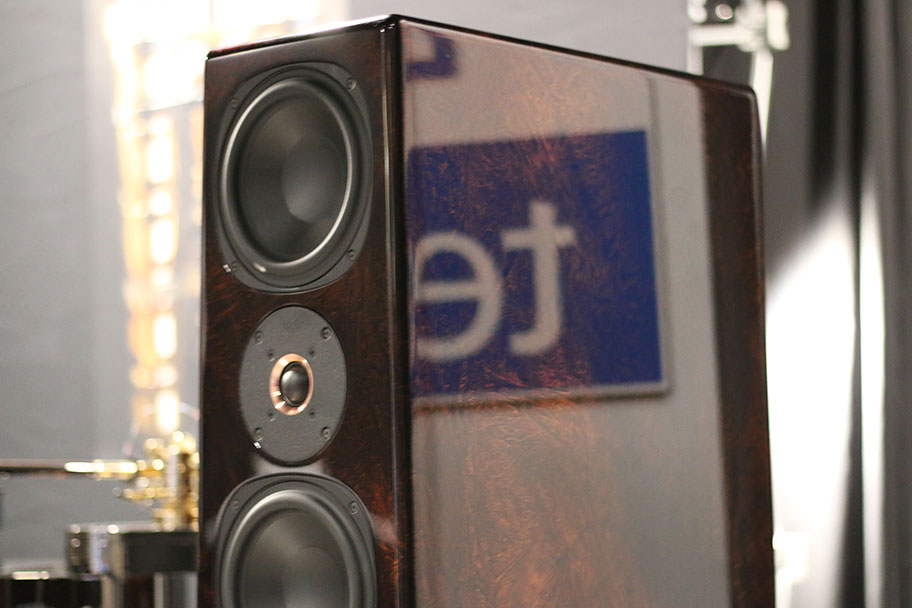
The individual engines that produce sound. They combine the electronic components needed to convert the audio signal into something you can actually hear. Drivers can only be so powerful individually, so the more a manufacturer packs into a floorstanding speaker, the richer and more detailed the sound likely will be. As a rough guideline, you should never see less than three drivers in a single unit – anything less, and you're not going to get the sound you deserve. At the top ranges, you can see up to six and sometimes even seven individual drivers in a unit. Drivers are split into tweeters (high sounds, like violins), mid-range (human voice) and woofers (low sounds, like basslines). The tweeters are a good indication of where a speaker falls on the budget scale. Cheaper speakers will use cone tweeters - yes, it's in a cone shape. This doesn't spread sound as well as other shapes, and in addition, the materials don't often measure up (paper is most common - effective, to be sure, but not exactly high-grade). Better models will use dome tweeters, which treat the sound more effectively and spread it more evenly. By the way, drivers also include woofers – the oversized ones which produce bass frequencies. We think these are worthy of a little bit more explanation, and we’ve included them in their own section below.
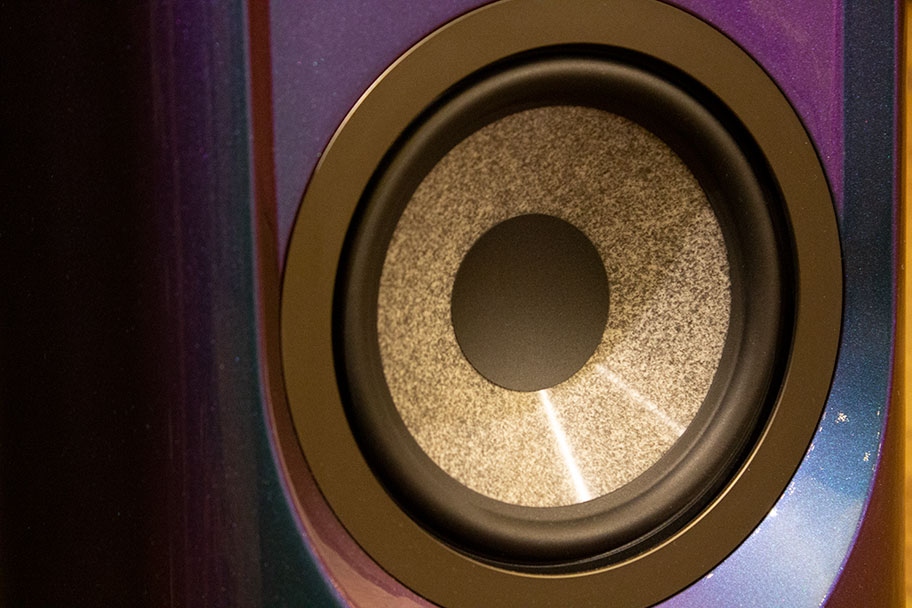
Wattage refers to the power that can be pushed through each speaker. You should look at watts per channel in particular, as this is a broad measure of how much oomph each driver will have. Wattage is further divided into Peak and Continuous. Peak wattage is how much power the speaker can handle at absolute maximum capacity. Unless you’re planning to live on the edge, you can ignore. Continuous is the average wattage the speaker puts out on any given Sunday – in other words, what it will put out when played at what most people would consider an average volume. You’ll notice that in the list of specs for each speaker, we give a recommended amplifier power. This is because any amplifier will need to not only be able to provide sufficient power to the speaker to satisfy its continuous wattage needs – the last thing you want is a speaker that isn’t getting quite enough power – but also because you’ll need to know where the breaking point is. In other words, what's the absolute peak power your speaker can take? Not just because you want to drive at maximum volume, but because music has loud parts and soft parts, and you need to know that both your amplifiers and speakers can handle them.
Let’s say you’ve got a set of speakers, like the Bowers & Wilkins 603 S2, with a recommended amp power of 30-200 watts. That means that any amp that generates continuous and peak power within that range is a good match. Something like the Rega Brio, which has continuous power of 50 watts, would be ideal. You’ll also need to take into account impedance. This refers to the electrical resistance a speaker has, and it's ability to… We lost you already, didn't we?
Not to worry. The good news is that impedance, and how it relates to wattage, is relatively easy to explain, although it does take a little more space and time than we have here. For short reference: the output power of your amplifier and the recommended range of your speakers should, in theory, be at the same impedance. Amp impedance can be lower than speaker impedance, but speaker impedance should never be lower than amp impedance. If you're curious about what the Ω symbol is in our stats table, and how it can help you get the absolute best out of your setup, then you should check out our full guide to matching speakers and amps, which will clue you in.
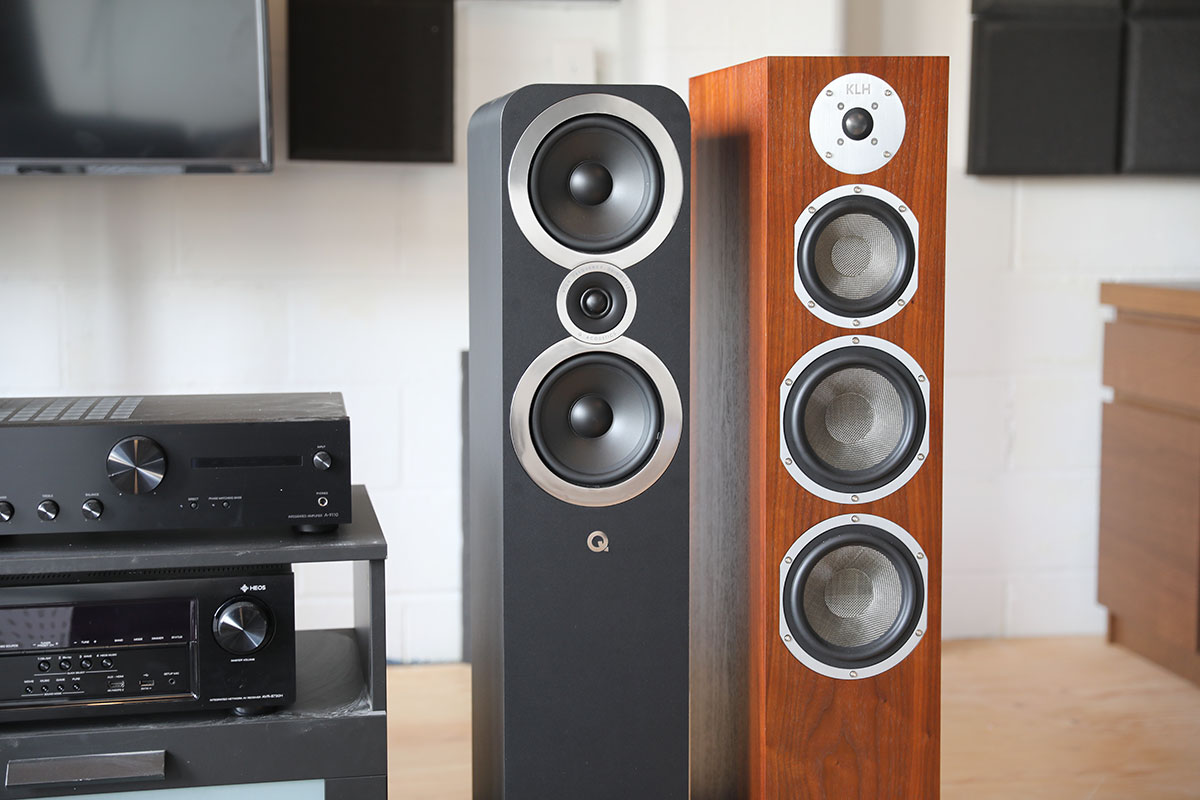
This one is easy. For sensitivity, read: loudness. Sometimes called efficiency, this as a measure of how loud a set of speakers will go when a certain amount of power (usually one miliwatt) is put through them. All things being equal, you should be able to line up a set of speakers in a row, put exactly the same amount of power through them, and get a general idea of how loud they all are at the same power level, by measuring the decibels (dB).
In practice, it’s a little less simple than that. Manufacturers don’t have an independent testing standard, so you have to take sensitivity ratings with a grain of salt. Regardless, they are generally accepted way of determining how much sound speaker will put out. If you have a smaller space, you can quite happily go for speakers with a sensitivity below, say, 88dB. A larger space will require a higher sensitivity rating. For reference, the loudest speakers on our list are the Klipsch R-26FA at 97dB.
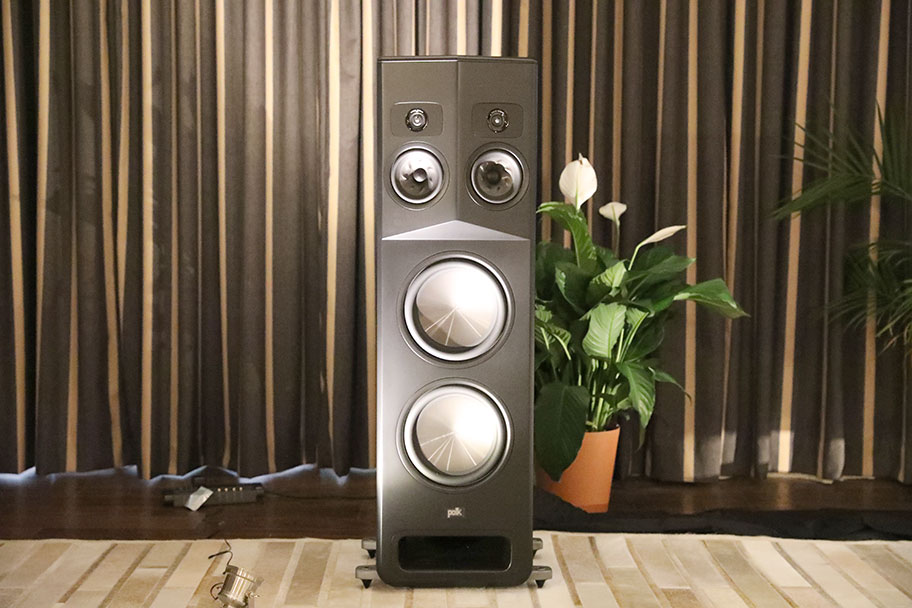
On the surface, this is simple. Frequencies measure how low and how high sounds are. It's measured in Hertz - or, if we're talking about really high sounds, kiloHertz (literally, thousands of Hertz.) Speakers that have the widest frequency range would, in theory, be able to present more detailed sound - even if, in practice, humans can only hear up to around 17,000 Hertz (17 kiloHertz/kHz). When it comes to floorstanding speakers, the bass is worth spending a little time on. Work with us here.
Woofers are specialised drivers that are used to create bass frequencies. Almost all floorstanding speakers contain at least one – some of them may even have a lone woofer and a single tweeter – and they often produce very good low-end. They are likely to be oversized, and gobble up the bulk of the power that is fed into the speaker. But here’s an interesting question: are they enough? What we mean is this. To get truly impactful bass, you need to reach really low in the frequency spectrum – down to the place where we are no longer able to hear sound, but only to feel it. To get these frequencies pumping, you need absolutely tremendous power – often more than a floorstanding speaker can generate, even the really big ones. While you’re certainly able to get away with relying on the woofers in your floorstanding speakers, we would always recommend buying an additional subwoofer. It will do the job that even the best floorstanding speakers can’t.
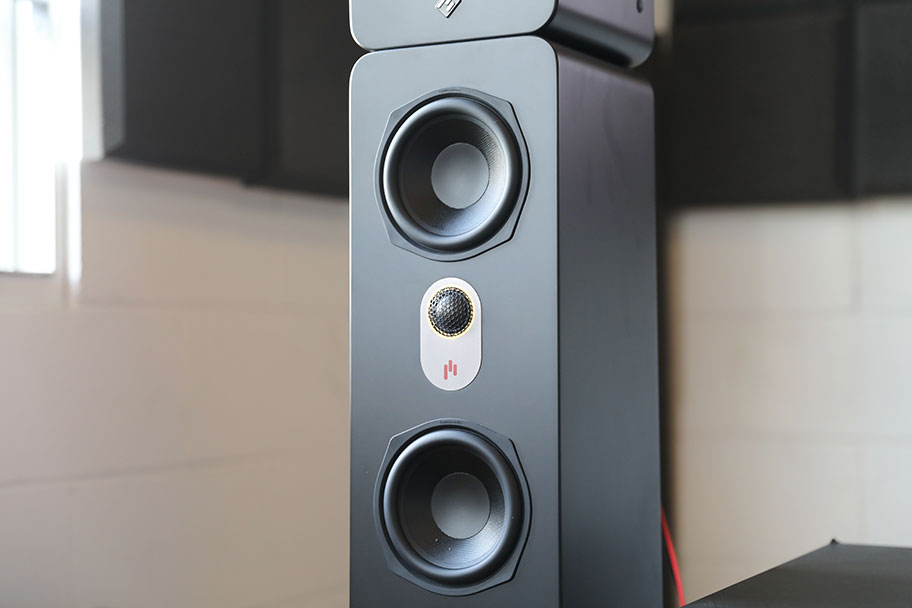
This bit’s actually quite simple. A passive speaker doesn’t have a built-in amplifier. It needs external amplification, which is why you usually plug your speakers into a separate amp or receiver. Powered (or Active) speakers contain their own amplifier. Usually? You don’t have to worry about this very much. Almost all home theater speakers are passive. It is worth checking, however, as if you plug an active speaker into an amplifier using anything but a dedicated cable known as a line-level cable, there can sometimes be a bang. Again: you’re unlikely to run into this, but do try and keep an eye out. You will also probably be needing a home theater system to hook these up to. Don't worry, we've got you covered.
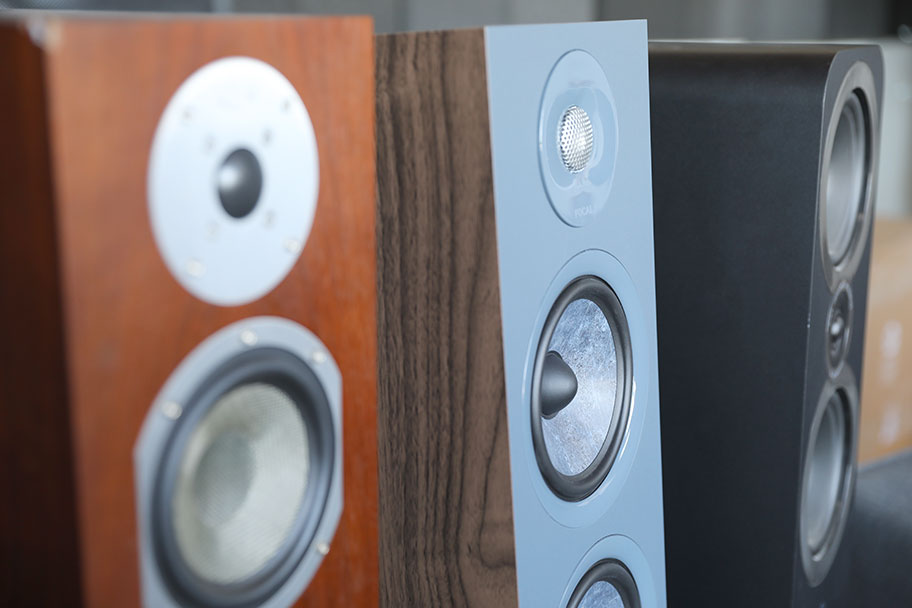
Here’s a question for you. What is more appropriate: to use a pair of floorstanding speakers as part of a home theater system, or to simply use them for playing music through a stereo amp? The traditional response is to go with the former. Floorstanding speakers, if you believe the vast body of knowledge on the subject, are best when used for home theater applications. The way they’ve been tuned and designed has been to slot into an existing system with other speakers. The orthodoxy says that bookshelf speakers are the ones to go for if you’re building a simple hi-fi music system.
We are here to say that’s nonsense. There’s absolutely nothing wrong with using floorstanding speakers in a hi-fi setup. While it might be overkill for some people, particularly if space is an issue, as long as you’re pairing them with a suitable amp, they can do wonders for your music – particularly something like the KLH Kendall, which are known for being very musical.
They also have the added advantage in that they may, in some cases, negate the need for additional subwoofer. We realize this is controversial – and, if we’re being honest, will always advocate getting a traditional subwoofer to handle the low frequencies. But if you’re pressed for space, and want to have a simple two-speaker setup that doesn’t compromise on the bass, then you’ll get far more bang for your buck with a pair of floorstanding speakers than you will with a pair of bookshelf speakers. Ultimately, you should let your budget and your space needs be your guide. It may also be perfectly possible to simply play music through your home theater system, making it more of an all in one solution. In other words: don’t let accepted orthodoxy tell you what to do with your speakers. Floorstanders are often far more versatile than they are given credit for.
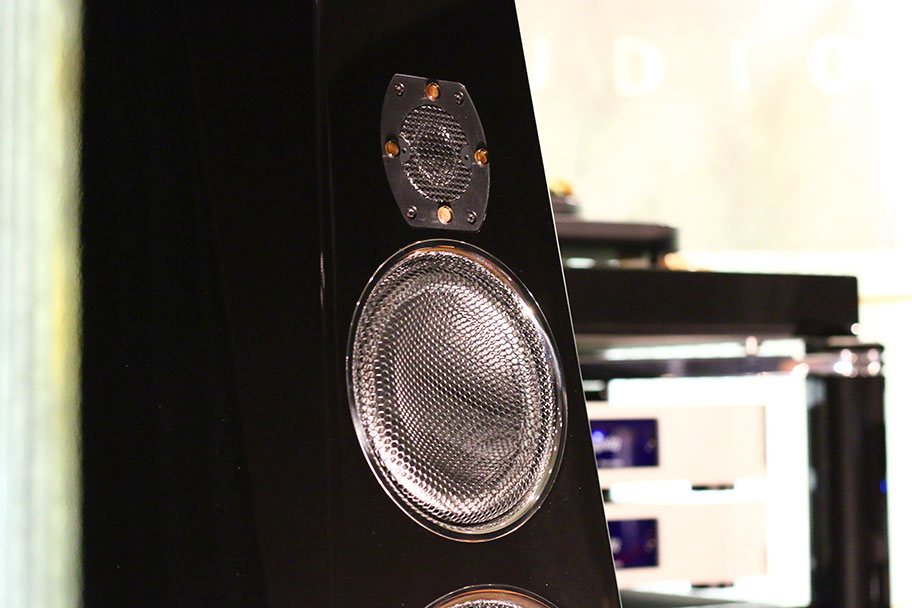
Like all speakers, the sound that floorstanding models generate isn’t equal wherever you’re able to hear it. There will be certain positions in relation to the speaker where things sound ‘right’: whether bass is more full, the highs more detailed, the mids deeper. This, ladies and gentlemen and other, is known as the sweet spot, and it’s a goddamn miracle. Get in the sweet spot, and every cent you spend on your new speakers will be worth it. However, this can take a little bit of work to achieve. Ultimately, you need to set up your speakers in your preferred position, and quite literally move around until you found the listening spot you like. We love to suggest a more scientific way of finding this, but so much is dependent on the environment you place your speakers in, and what’s inside it, that it would be a fool’s errand to try.
However, there is a particular trick that you can use to help narrow down the sweet spot: toe-in. Imagine you are sitting in front of your speakers, parallel to the direction of the drivers. Now, imagine angling those drivers in between 10° and 15°. Obviously, you do this by turning the speakers themselves, and you don't have to worry too much about accurately measuring the angle. Even a little bit of a turn can work wonders. Not every set of speakers needs to be toed-in, and different manufacturers will provide different advice. The $2,995 MarkAudio-SOTA Cesti T speakers, for example, are known to have a little bit of a boost in the high frequencies when toed-in, while being a little bit more flat and neutral when faced dead on. Again: you need to play around to find the configuration you like.
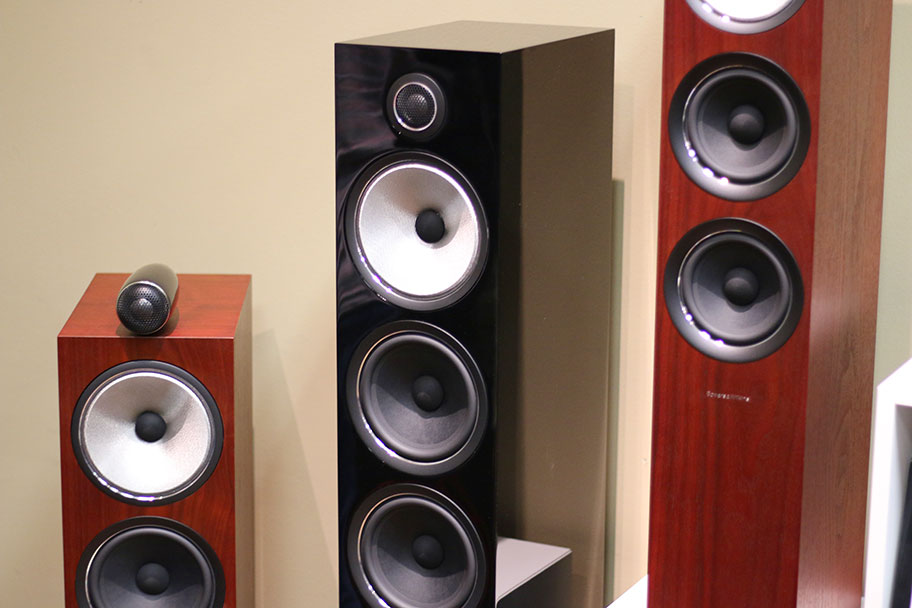
No subject has caused more ruin friendships, more personal vendettas, than speaker burn-in. Even now, we are a little bit hesitant to write about it. The idea is this: brand-new speakers (and headphones), fresh from the factory, will have drivers that are stiff. Stiff drivers mean sound that isn’t going to be quite its best, and – the devotees say – the best way to remedy this is to spend up to a hundred hours playing audio through them, which will help give some flexibility back to the material. Only then can the speakers be truly evaluated.
The counterargument? Simply that any burn-in effect that may have been witnessed by testers in the past is simply the result of our ears getting used to the sound of a particular set of speakers or headphones. While it’s true that driver structure does change over time, the changes are absolutely tiny – far too small to make a real difference in the auditory quality. Our take? At the risk of pissing off just about everybody, we don’t think burn-in makes a huge difference. Or at least, we’ve certainly never noticed it in any dramatic fashion. Ultimately, you should buy your speakers, then simply enjoy them. At the worst, the sound won’t change at all, and at the best, it will improve!
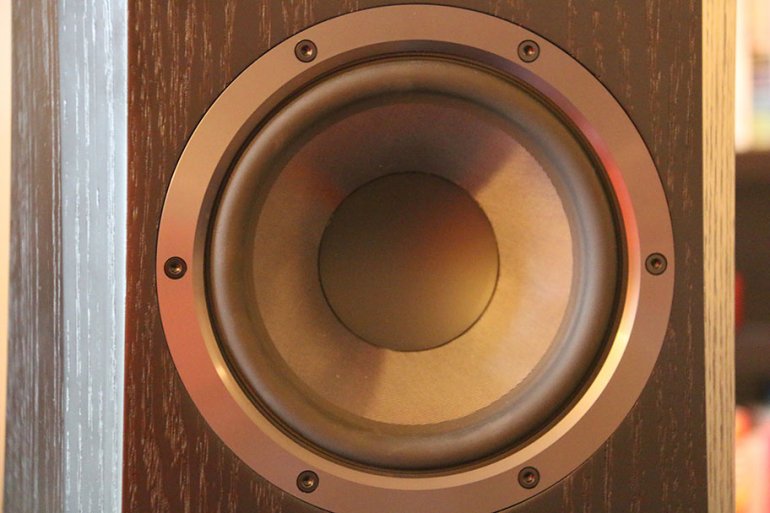
You'll often see these terms thrown around on product pages. They are a needlessly-complicated way of saying something very simple. Two-way speakers separate the frequencies they produce into lows and highs. To do this, they have two different types of drivers: woofers (for the lows) and tweeters (for the highs).
Three-way speakers - you guessed it - separate the frequencies into three: mids, lows, highs. That means they need midrange drivers as well. Traditionally, three-ways are better than two-ways, producing more detailed sound. BUT: this isn't always the case, and a good two-way can often beat a three-way, especially on vocals. The Klipsch, for example, easily beats the three-way Polk Audio Signature S50.
Back To Our Floorstanding Speaker Picks Back To Our Comparison Table